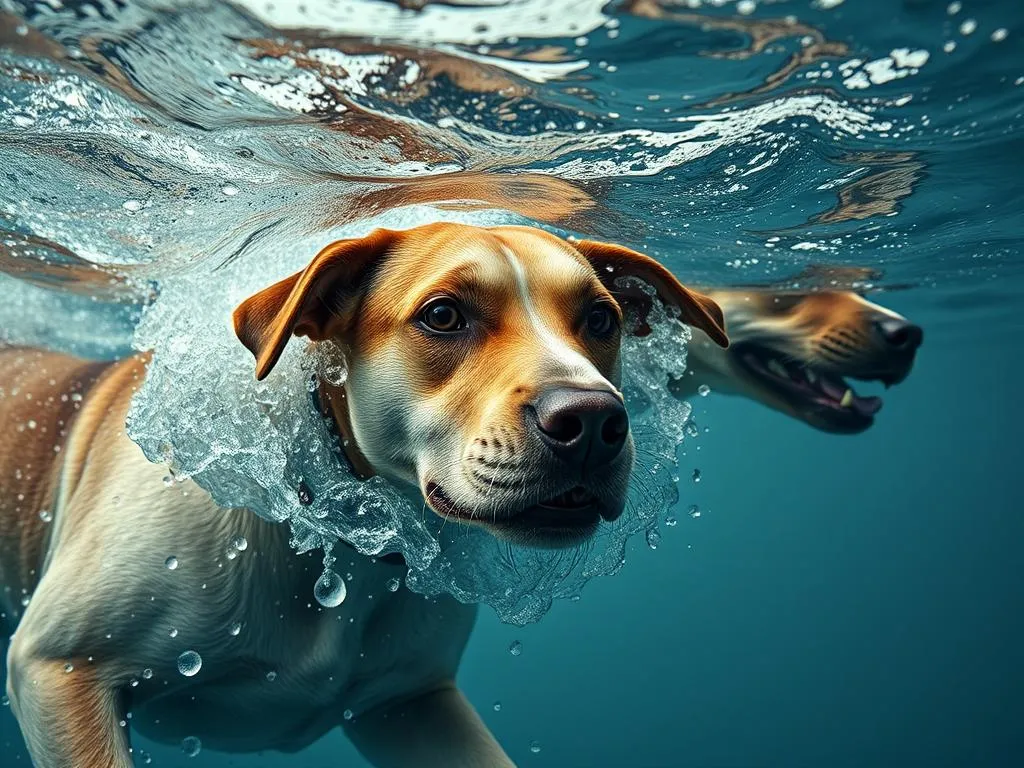
Swimming is a delightful activity that many dogs enjoy, but as a dog owner, you may wonder: can all dogs swim? This question is important for ensuring the safety and well-being of our furry friends. Before diving into the specifics, it’s essential to explore several factors influencing a dog’s swimming ability, from anatomy to safety measures.
Understanding Dog Physiology
Basic Anatomy of Dogs
A dog’s anatomy plays a significant role in its ability to swim. Dogs have a unique body structure that varies by breed, but there are common features that facilitate swimming:
- Muscle Mass: Dogs with well-developed muscle mass in their limbs and core tend to swim more efficiently.
- Bone Structure: A lighter bone structure can contribute to better buoyancy, making it easier for dogs to stay afloat.
Understanding these anatomical features can help you assess whether your dog is likely to enjoy swimming.
Breeds and Their Natural Swimming Abilities
Not all breeds are created equal when it comes to swimming. Some breeds are natural swimmers, thanks to specific traits that enhance their abilities:
- Labrador Retrievers: Known for their love of water, these dogs have webbed feet and a strong build that make them excellent swimmers.
- Newfoundlands: This breed is famous for its swimming prowess; they have a thick coat for insulation and webbed feet for propulsion.
- Portuguese Water Dogs: Bred to assist fishermen, these dogs have a muscular build and a water-resistant coat.
In contrast, breeds like Bulldogs or Pugs, with their stocky builds and short snouts, may struggle in the water. Recognizing these differences is crucial for dog owners considering swimming activities.
Factors Influencing Swimming Ability in Dogs
Physical Factors
Several physical characteristics can affect whether a dog can swim effectively:
- Size and Weight: Larger dogs may struggle with buoyancy, while smaller, lighter dogs might find it easier to navigate water.
- Body Shape: Dogs with a barrel-shaped chest may find it harder to swim than those with a more streamlined physique.
These factors can significantly influence a dog’s swimming capabilities and comfort in water.
Age and Health Conditions
A dog’s age and health can also affect its swimming ability:
- Puppies vs. Senior Dogs: Puppies often have a natural instinct to swim, but their coordination may not be fully developed. Senior dogs may have arthritis or joint issues, making swimming painful or difficult.
- Health Issues: Conditions like hip dysplasia or heart problems can hinder a dog’s ability to swim. Always consult with a veterinarian before introducing swimming to a dog with existing health concerns.
Understanding these factors can help you make informed decisions about your dog’s swimming activities.
Training and Exposure
Training is vital for a dog’s swimming success. Early exposure to water can help foster a love for swimming:
- Introduce Water Gradually: Allow your dog to explore shallow water before venturing into deeper areas.
- Positive Reinforcement: Use treats and praise to encourage your dog when it shows interest in the water.
Training can significantly enhance a dog’s confidence and comfort in swimming scenarios.
Safety Precautions for Swimming with Dogs
Assessing the Environment
Not all swimming spots are safe for dogs. When planning to swim with your dog, consider the following:
- Safe Locations: Look for designated dog-friendly beaches or pools where you can supervise your dog.
- Hazards: Be aware of potential dangers like strong currents, deep water, or wildlife that could pose risks.
Choosing the right environment is crucial for ensuring a safe swimming experience.
Using Safety Gear
Safety gear can be a lifesaver when swimming with dogs:
- Dog Life Jackets: These can provide added buoyancy and security for dogs that may struggle to stay afloat.
- Supervision: Always keep a close eye on your dog while they swim, setting limits on how far they can go in the water.
With the right precautions, the risk of accidents can be minimized.
Recognizing Signs of Distress
Understanding when a dog is struggling in water is vital:
- Panic or Excessive Splashing: If your dog is flailing or appears distressed, it may be in trouble.
- Difficulty Keeping Head Above Water: Signs of exhaustion or inability to swim should be taken seriously.
In case of an emergency, knowing how to respond promptly can save your dog’s life.
Benefits of Swimming for Dogs
Physical Health Benefits
Swimming offers numerous physical health benefits for dogs:
- Cardiovascular Fitness: Swimming is an excellent low-impact workout that helps maintain a healthy heart.
- Muscle Strengthening: Regular swimming can tone muscles and improve overall strength.
For dogs with joint issues, swimming can be a fantastic alternative to traditional exercise.
Mental Health Benefits
Swimming is not only good for the body but also for the mind:
- Stress Relief: Water can have a calming effect, helping to reduce anxiety and stress in dogs.
- Socialization: Swimming can provide an opportunity for dogs to meet and play with other dogs, promoting social skills.
Engaging in swimming can enhance your dog’s mental well-being.
Age-Specific Benefits
Swimming provides unique benefits tailored to a dog’s age:
- For Puppies: Swimming promotes confidence, coordination, and socialization skills.
- For Older Dogs: Swimming can help maintain mobility and alleviate pain associated with age-related conditions.
These age-specific advantages make swimming a valuable activity for dogs at different life stages.
Conclusion
Understanding whether all dogs can swim involves considering various factors, including physiology, health, and the environment. While many dogs are natural swimmers, others may require more support and training. Prioritizing safety and health when introducing your dog to swimming is essential for a positive experience.
Encouraging responsible pet ownership includes regular health checks and ensuring that swimming remains a fun and beneficial activity for dogs that are suited for it.
FAQs about Dog Swimming
Can all dog breeds swim?
Not all dog breeds are natural swimmers. Breeds like Labradors and Newfoundlands are well-adapted for swimming, while others, such as Bulldogs, may struggle due to their physical characteristics.
What should I do if my dog is afraid of water?
Desensitize your dog to water gradually. Start with shallow areas and use positive reinforcement, such as treats and praise, to encourage them.
How can I tell if my dog is a good swimmer?
Signs of a good swimmer include a natural paddling motion, comfort in the water, and the ability to keep their head above the surface.
Is it safe for my dog to swim in all bodies of water?
Not all bodies of water are safe for swimming. Be cautious of currents, pollution, and wildlife. Always choose dog-friendly areas and supervise your dog closely.
By understanding these aspects of dog swimming and health care, you can make informed decisions that enrich your dog’s life while keeping them safe and healthy.









